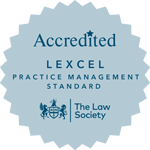In this instalment of her popular blog, Emma Slade looks at whether you can make a negligence claim if you are given an incorrect property valuation
For guidance on incorrect property valuation claims contact us for a free case assessment on 0333 888 0403 or send an email to [email protected]
They always say that buses are like bananas. You hang around at the bus stop for ages and then the buses all turn up together – like bunches. I think that is the way with professional negligence claims as well. Or at least case types.
Recently, I have had a lot of claims about negligent overvaluations: where someone has bought a property, got a valuation for mortgage purposes and on the strength of that valuation, obtained a hefty mortgage. Years later, often when they are in a position of negative equity, they find that the original price paid – based on the valuation report – was grossly-over inflated. In those situations the client comes to me to make a compensation claim against the valuer for providing an incorrect property valuation. I then normally arrange for an expert valuer to give a retrospective valuation. He can look back and give an opinion as to what the correct price should have been.
If there is a difference in the price, it doesn’t mean that there is automatically a good valuer’s negligence claim though. There has been a lot of case law in the past on this subject. Don’t worry, I won’t start citing case names and quoting learned judges. I will go straight to the punch line by explaining that the courts have stated that the valuer will be allowed a 10% “margin of error” before being held to have given an incorrect property valuation. To give an example, if you bought a property and paid £430,000 for it, but the retrospective valuation is £400,000, you probably won’t have a claim. You would have needed to have paid £440,000 or more for it to have a valid valuer’s negligence claim and overcome the 10% margin of error.
So, on to the reason for this post.
I had a call the other day from a Mr Nikolaides (not his real name, naturally) to discuss a an incorrect property valuation claim. He gave me the details and in this instance, he had already obtained a retrospective valuation: The property had been over valued by the mortgage company’s valuer by as much as 21%. Just as I was about to tell him that yes, he had a great claim, he told me that the property he had bought was a “buy to let”. My heart sank.
You see, although he had overcome the “margin of error” problem, there was a case recently– and this time I will give you the name – called Scullion –v- Bank of Scotland – which has scuppered Mr Nikolaides claim. In that case, Mr Scullion did the same as Mr Nikolaides: bought an investment property to let out, but the valuation obtained by the mortgage company was grossly overinflated as was the projected likely rental income. He issued a valuer’s negligence compensation claim based on the incorrect property valuation. He won in the first court, but the valuer appealed and the Court of Appeal overturned the decision. It said that because the transaction was “commercial in nature”, Mr Scullion could not rely on the mortgage company’s valuation.
I really feel for Mr Nikolaides. He is just an individual who decided that, rather than invest in a pension plan, he would invest in property. If he was buying the house for his own use, he would be able to bring a negligence claim to recoup his losses caused by the incorrect property valuation, but he can’t do so because it was a buy-to-let and he relied on the valuation carried out for the mortgage company..


